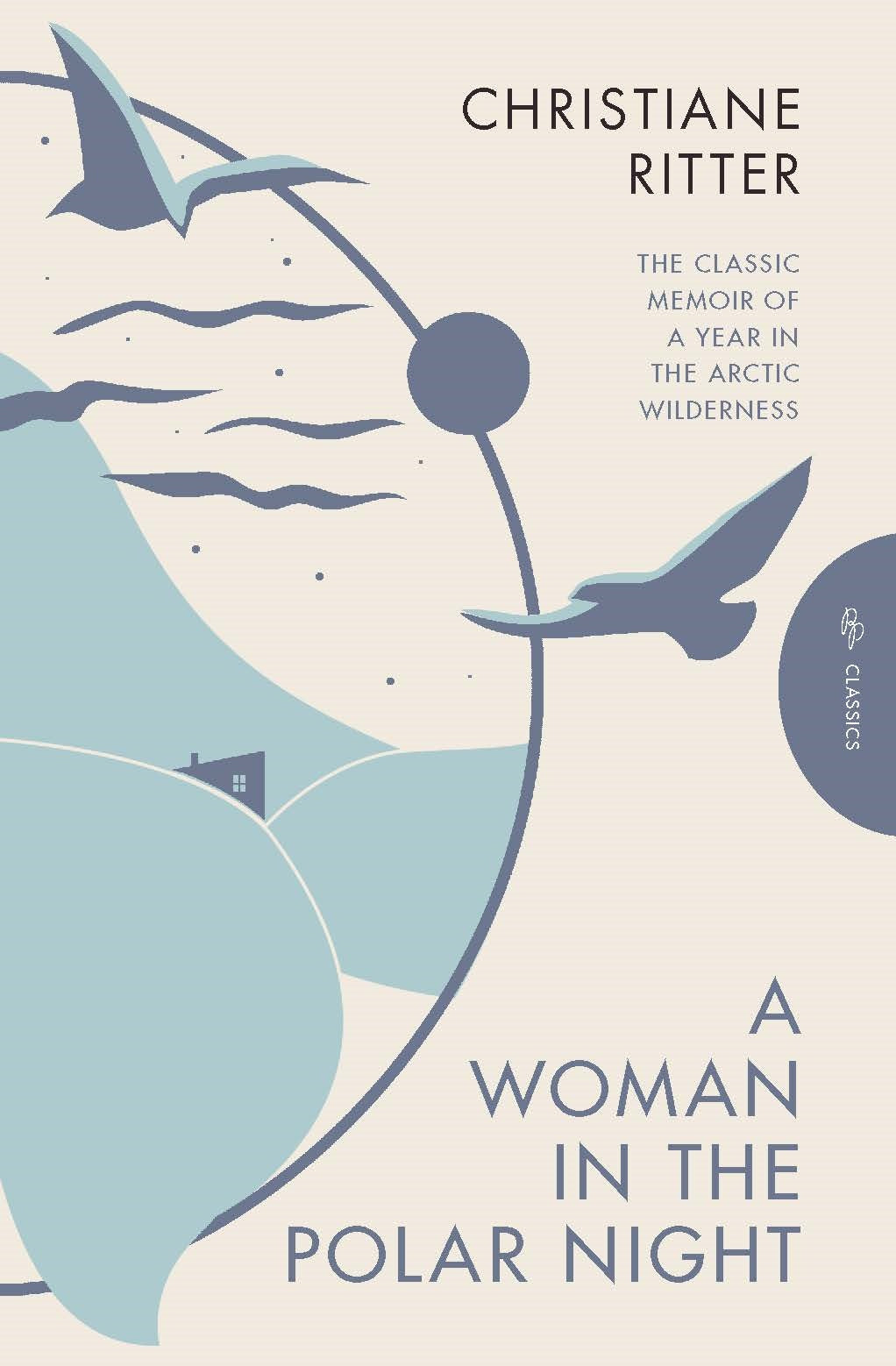Christiane Ritter
A Woman In The Polar Night
A Woman In The Polar Night
Couldn't load pickup availability
Gabi's Review
A Woman In The Polar Night is a popular memoir first published in 1935, republished in 2024. Christiane Ritter, a renowned Austrian painter, left domestic comforts, her teenaged daughter, her driver, cook and gardener for a year-long sojourn, to join her husband and male companion hunter, in a tiny shack on a remote coast of the Arctic island of Spitsbergen (Svalbard). The year is 1934, when there are very few female voices in this male-dominated wilderness genre. Ritter presents us with a unique feminine voice, defying societal norms in order to find freedom and enlightenment on this ultimate frontier adventure. Ritter is quite stoic in her expectations of loneliness and deprivation, but what transpires in her lived experience was to me was utterly fascinating.
What struck me most when reading this memoir in the vivid and visceral rendering of the landscape of Grey Hook. This polar landscape is startlingly dramatic with its shingle shoreline, treeless permafrost, violent brooding mountains, tranquil fjords and the dynamic rapid shift in weather conditions. The play of light on these features is articulated with exquisite clarity and precise, without being over indulgent. Notable among Ritter's observations are her comparisons to Chinese water colour paintings, describing the sfumato atmospheric effects of the receding ranges. And then there is her luminous description of the experience of the aurora.
The second thing which struck me is more complex. While being a product of her time in which prescriptive gender roles are more entrenched, what emerges in Ritter's narrative, is an appreciation of the respective complementary strengths in these ascribed roles in an extreme environment. Life is pared to essentials with survival being paramount, and the men lay down the law around equipment storage after Ritter's unwanted tidying initiative. However, her skill with home duties is openly appreciated by the men, turning a spartan fishing hut into a sanctuary. Ritter's equanimity, vitality and resilience thrive in conditions with a tiny malfunctioning stove, and an incident where she is isolated for 13 days in a violent blizzard without the support of the men, as drift ice threatens to bring polar bears to her door.
This is a rewarding read both for its historic lens and its affirmation of living a simple life in the natural world. The arctic landscape is the standout character in this book, with its polar bears, seals, arctic foxes, fluffy ptarmigans and snowy owls. Humorous at times and always astonishing, Ritter invites you to spend a year in an alien land where seclusion paradoxically creates not a sense of isolation, but one of heightened awareness to being alive to all our senses and sensibilities. I am certain this memoir will delight and enrich you.
Publisher's Review
In 1934, the painter Christiane Ritter leaves her comfortable life in Austria and travels to the remote Arctic island of Spitsbergen, to spend a year there with her husband. She thinks it will be a relaxing trip, a chance to 'read thick books in the remote quiet and, not least, sleep to my heart's content', but when Christiane arrives she is shocked to realize that they are to live in a tiny ramshackle hut on the shores of a lonely fjord, hundreds of miles from the nearest settlement, battling the elements every day, just to survive. At first, Christiane is horrified by the freezing cold, the bleak landscape the lack of equipment and supplies... But as time passes, after encounters with bears and seals, long treks over the ice and months on end of perpetual night, she finds herself falling in love with the Arctic's harsh, otherworldly beauty, gaining a great sense of inner peace and a new appreciation for the sanctity of life. This rediscovered classic memoir tells the incredible tale of a woman defying society's expectations to find freedom and peace in the adventure of a lifetime.
Share


